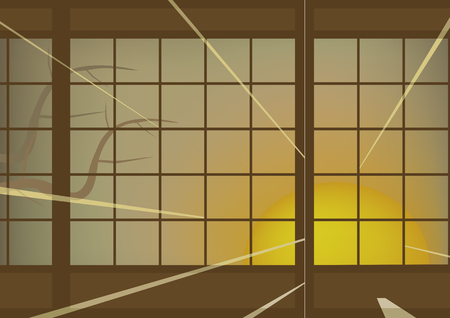Introduction to Vastu for Study Rooms & Libraries
Vastu Shastra, an ancient Indian architectural science, plays a pivotal role in shaping harmonious living spaces that align with natural energies. For generations, Indian families have embraced Vastu principles to enhance positivity and productivity within their homes. When it comes to designing study rooms and home libraries, these guidelines hold particular importance. The right Vastu placement not only fosters concentration, learning, and academic success but also ensures mental peace and well-being for students and readers alike. By understanding the foundational concepts of Vastu Shastra—such as orientation, spatial arrangement, and energy flow—homeowners can create study environments that nurture intellectual growth while honoring India’s cultural wisdom. This guide will explore essential Vastu tenets for study room and library layouts, helping you transform your educational spaces into sanctuaries of knowledge and inspiration.
2. Ideal Location for Study Room & Library as per Vastu
In traditional Indian homes, the placement of the study room and library is considered crucial for fostering concentration, academic achievement, and spiritual growth. According to classical Vastu Shastra texts, the ideal direction and location within your residence are not only based on architectural logic but also deeply rooted in Indian cultural beliefs regarding energy flow and positivity.
Recommended Directions for Study Room & Library
The following table highlights the most auspicious directions and their associated benefits as prescribed by Vastu:
| Direction | Vastu Significance | Key Benefits |
|---|---|---|
| East | Direction of Sun; Source of Knowledge | Enhances focus, promotes learning, brings clarity of thought |
| North-East (Ishanya) | Corner of Wisdom; Spiritual Growth | Invites positive vibrations, aids concentration, boosts memory power |
| North | Direction of Mercury; Intelligence | Supports logical thinking, academic pursuits, career success |
Placement Tips Based on Indian Preferences
- Avoid South-West: This direction is traditionally reserved for master bedrooms or heavy storage; placing a study room here may lead to sluggishness and lack of motivation.
- Windows Facing East or North: Ensure natural sunlight enters from these directions, as per both Vastu and Indian climate preferences.
- Quiet Zone: Select a part of the home away from kitchen heat or entrance noise to maintain a peaceful learning environment.
- Auspicious Entry: The entrance to the study room should ideally be in the north-east, east, or north direction for an uninterrupted flow of positive energy.
Cultural Notes on Placement
In many Indian households, special care is taken to keep religious books or scriptures in the north-east corner of the library section, respecting both Vastu guidance and local traditions. Additionally, furniture layout should allow students to face east or north while studying—a practice believed to align with cosmic energies for better retention and calmness.

3. Recommended Layout and Orientation
Proper layout and orientation of a study room or home library are crucial for ensuring positive energy flow, as per Vastu Shastra principles widely followed in India. To promote concentration and intellectual growth, it is advised to position the study room in the north-east or east direction of your home. This placement maximizes natural daylight and supports clarity of mind, which is essential for students and professionals alike.
When arranging furniture, place the study desk so that the person faces east or north while studying. This orientation is believed to enhance focus, memory retention, and mental calmness. Avoid sitting with your back towards the door, as it may cause distractions and instability. If possible, keep a solid wall behind the chair for support and security—never have an open space or window directly behind.
The entry door should ideally be in the north-east, north, or east direction. Ensure that the door opens smoothly and does not creak, signifying unobstructed opportunities and positive vibes entering the space. Avoid placing the desk right in front of or under a window; instead, keep windows on the left side to allow gentle sunlight without causing glare on books or screens.
Bookshelves must be placed along the southern or western walls and should never be positioned above the study table. Heavy bookcases should always rest against a solid wall to avoid creating a feeling of pressure overhead. Maintain clutter-free surfaces and leave enough open space at the centre of the room for good Prana (life energy) circulation.
For additional Vastu compliance, incorporate earthy tones such as light yellow, cream, or green for walls and décor, which promote peace and wisdom. Keep a small globe or map on the desk to stimulate curiosity about the world—a common practice among Indian families nurturing academic ambition.
By following these recommended layouts and orientations rooted in Indian traditions and Vastu guidelines, you can create a study environment that harmoniously blends functionality with positive energy flow.
4. Colours, Décor, and Materials
When designing a study room or home library according to Vastu Shastra in India, the choice of colours, décor elements, and materials plays a crucial role in fostering concentration and positive energy. Traditional Indian wisdom recommends specific combinations that not only elevate the aesthetic value of your space but also align with Vastu principles.
Recommended Wall Colours for Study & Library
| Colour | Vastu Benefits | Cultural Significance |
|---|---|---|
| Light Green | Enhances learning, growth, and harmony | Associated with nature and renewal in Indian tradition |
| Cream/Off-White | Promotes clarity and calmness of mind | Symbolizes purity and simplicity in Indian homes |
| Pale Yellow | Increases focus and intellectual energy | Represents knowledge and auspiciousness |
| Sky Blue | Brings peace and tranquillity, reducing stress | Evoke spirituality; often seen in temples and meditation rooms |
| Earthy Tones (Beige/Brown) | Grounding effect; encourages stability while studying | Resonates with traditional Indian aesthetics using natural hues |
Décor Elements Aligned with Vastu & Indian Culture
- Sacred Symbols: Consider placing symbols like Saraswati Yantra, Om, or images of Goddess Saraswati (the deity of knowledge) on the northeast wall.
- Plants: Indoor plants such as Tulsi (Holy Basil) or Money Plant can be placed near the window for fresh air and positivity.
- Aroma: Use incense sticks or essential oil diffusers with sandalwood or jasmine fragrances to uplift the mood.
- Minimal Clutter: Organise bookshelves neatly; avoid stacking books haphazardly as per Vastu guidance.
- Lamps: Brass or copper lamps are recommended for study tables, reflecting traditional Indian crafts and providing warm illumination.
Traditional Indian Materials for Enhanced Energy Flow
| Material Type | Application Area | Cultural & Vastu Relevance |
|---|---|---|
| Mango Wood/Sheesham (Indian Rosewood) | Shelves, desks, chairs | Sustainable, robust; believed to absorb negativity and radiate warmth in Indian homes. |
| Kota Stone/Terracotta Tiles | Flooring or accent walls | Naturally cooling; traditional flooring choice enhancing grounding energy. |
| Cotton/Kalamkari Fabric Curtains & Cushions | Curtains, seating covers, table runners | Pays homage to Indian textile crafts; soft textures support comfort during long study hours. |
Key Tips for Harmonious Design:
- Select calming shades that resonate with your personal taste but stay within Vastu-approved palettes.
- Avoid dark red or black shades, as they may induce restlessness according to Vastu experts.
- Add handcrafted décor from local artisans—like Madhubani paintings or bamboo pen holders—to celebrate Indian artistry while ensuring a peaceful environment for study and reading.
Create a serene atmosphere where every element—from wall colour to material choice—works together to inspire learning, creativity, and positive vibrations as per India’s time-honoured Vastu traditions.
5. Lighting and Ventilation Vastu Tips
Proper lighting and ventilation are vital aspects of Vastu Shastra for a study room or library in any Indian home. According to traditional wisdom, an abundance of natural light not only keeps the environment fresh but also energizes the mind, fostering better concentration and clarity during learning. Ideally, position study desks so they receive sunlight from the east or north, as these directions are considered most auspicious for intellectual pursuits. Large windows in these directions allow positive energy to flow in, keeping the space vibrant and reducing lethargy.
Natural Light: The East and North Advantage
Sunlight from the east is particularly beneficial in Vastu. If possible, design your study area so that morning sunlight illuminates the workspace—this is believed to activate intellect and enhance memory retention. North-facing windows also ensure soft, consistent daylight throughout the day, reducing eye strain and creating a serene ambiance. Use sheer curtains or blinds to modulate brightness while maintaining privacy.
Artificial Lighting: Balancing Ambience and Focus
When natural light is insufficient, artificial lighting plays a crucial role. Choose white or warm-white LED bulbs to mimic natural light and avoid harsh glares that can disrupt focus. Overhead lighting should be supplemented with task lights like desk lamps placed on the left side for right-handed individuals (and vice versa) to minimize shadows on writing surfaces. Wall-mounted lights or concealed cove lighting can add gentle illumination, ensuring every corner of the library is well-lit without overpowering the senses.
Ventilation: Breathing Life into Learning Spaces
A well-ventilated study area is essential for maintaining a healthy, positive atmosphere according to Vastu. Cross-ventilation is ideal—ensure there are at least two openings (windows or ventilators) positioned diagonally opposite each other for continuous airflow. Avoid blocking air movement with heavy curtains or cluttered furniture arrangements. Incorporating indoor plants like tulsi (holy basil) near windows not only purifies air but also brings a touch of Indian tradition to your study zone.
Cultural Nuances: Incense and Fragrance
In many Indian households, burning incense sticks or placing a small bowl of camphor in the study area is common practice to create an uplifting aura and ward off negativity. These traditional elements can complement good ventilation practices by keeping the environment fragrant and spiritually aligned with learning goals.
Summary: Creating an Auspicious Study Environment
By harmonizing natural sunlight, thoughtfully planned artificial lighting, and effective ventilation in accordance with Vastu principles, you establish a truly auspicious atmosphere for studying and reading. This fusion of ancient Indian wisdom with modern spatial planning supports academic growth, mental wellbeing, and a deep connection to cultural roots within your home’s learning sanctuary.
6. Do’s and Don’ts for Indian Study Room & Library Spaces
Essential Vastu Rules to Follow
Choose the Right Direction
As per Vastu Shastra, place your study room or library in the North-East, East, or West directions of your home. This ensures the natural flow of positive energy and enhances concentration for students and readers alike.
Positioning of Study Table
The study table should be placed so that the student faces East or North while studying. This helps in boosting memory power and sharpens focus, which is a traditional belief held by many Indian families.
Keep the Space Clutter-Free
A clean and organized study area attracts positivity and reduces distractions. Ensure that books are neatly arranged and unnecessary items are avoided, following the age-old Indian principle of “Swachhta” (cleanliness).
Common Mistakes to Avoid
Avoid Placing Study Area Under Beams
Sitting or studying under exposed beams creates mental stress and hinders concentration according to Vastu guidelines. Always choose a spot with a plain ceiling for maximum benefit.
No Mirrors in the Study Room
Mistakenly placing mirrors in the study space can cause restlessness and distract from studies. It is a common Vastu mistake seen in Indian homes that should be strictly avoided.
Lighting Matters
Poor lighting not only strains the eyes but also negatively affects energy flow. Always opt for bright, natural light during the day and soft white lamps at night to create an ideal learning environment.
Cultural Touch: Use Sacred Symbols Wisely
Decorate your study area with symbols like Saraswati idols, motivational quotes in Hindi or regional languages, or images of Guru Nanak or Swami Vivekananda for spiritual upliftment—but avoid cluttering the space with too many items as it can reduce Vastu benefits.
7. Vastu Remedies for Existing Study Rooms & Libraries
Not all homes or libraries in India are built with Vastu principles from the outset, but practical solutions can help harmonize spaces that do not align perfectly with Vastu Shastra. These easy-to-implement Indian remedies are ideal for students, professionals, and families seeking to improve learning and concentration without major renovations.
Correcting Directional Flaws
If your study room or library is not located in the recommended northeast, east, or north directions, you can place a small Vastu pyramid or a copper Swastik symbol on the wall facing those auspicious directions. This helps neutralize negative energies and brings in positivity, as per traditional Indian beliefs.
Enhancing Lighting and Airflow
Ensure your study space has adequate natural light by keeping windows clean and unobstructed. If natural light is limited, use bright white LED bulbs to mimic sunlight, promoting alertness and clarity. Also, consider placing a Tulsi (holy basil) plant near the window to purify air and add a touch of Indian spirituality.
Balancing Colours and Decor
Paint walls in soothing shades like off-white, cream, or light yellow—colours commonly found in Indian homes—to foster focus and calmness. Avoid dark shades that may cause lethargy. Hang motivational quotes in English or regional languages on the eastern wall to inspire positivity while reflecting local culture.
Furniture Placement Adjustments
If the study table cannot face east or north due to layout constraints, place a small mirror on the table so it reflects the student’s face toward the preferred direction. Use wooden furniture over metal or plastic for an earthy vibe aligned with Indian traditions.
Clutter Management Remedies
Keep books and materials organized; store them in closed cabinets if possible. Place a Ganesha idol or image at the entrance of the study area to remove obstacles—a common practice in Indian households. Regularly donate old books to local libraries or NGOs to encourage positive energy flow.
Simple Energy Boosters
Light an agarbatti (incense stick) before starting studies to purify the environment and enhance concentration. Use traditional brass lamps (diya) during evening hours for a serene ambiance rooted in Indian culture.
By integrating these Vastu remedies into existing study rooms and libraries, you can create an environment that nurtures learning, focus, and harmony, even if the original design does not fully align with Vastu Shastra principles.


